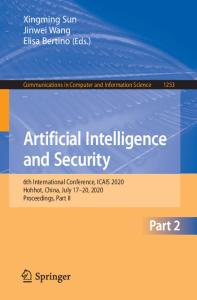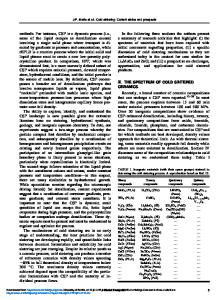Blood-based immunological monitoring after heart transplant. Current status and future prospects
- PDF / 295,733 Bytes
- 6 Pages / 595.276 x 790.866 pts Page_size
- 72 Downloads / 431 Views
REVIEW ARTICLE
Blood-based immunological monitoring after heart transplant. Current status and future prospects Jignesh K. Patel 1 Received: 1 December 2019 / Revised: 16 January 2020 / Accepted: 21 January 2020 # Indian Association of Cardiovascular-Thoracic Surgeons 2020
Abstract The development of effective immunosuppressive strategies has been a key to successful outcomes in heart transplantation. Immunosuppression however is a double-edged sword with consequences of rejection when underutilized and risk for infection, malignancy, and drug toxicity when used in excess. The search for non-invasive blood-based monitoring not only to assess allograft rejection but also to monitor overall state of immunosuppression remains very attractive, potentially reducing cost and complications and allowing more frequent testing to assess response to anti-rejection therapy. This review outlines the current status of blood-based immunological monitoring after heart transplantation including serological monitoring, biomarkers, and evolution of molecular technologies. Keywords Endomyocardial biopsy . Heart transplantation . Antibody-mediated rejection
Introduction The endomyocardial biopsy is a flawed but durable gold standard. Despite the development of durable mechanical circulatory support, heart transplantation remains the therapy of choice in the long term for selected patients with end-stage heart disease. In its infancy, heart transplantation was however limited by the lack of adequate immunosuppressive therapy, inability to monitor for allograft rejection, and unacceptable infection rates leading to high transplant mortality. The development of the percutaneous method for acquiring endomyocardial biopsies (EMB) for the assessment of rejection was a major step forward in post-transplant management [1], and this technique has survived the test of time over the last 45 years. Initial interpretation was limited to evaluation of acute cellular rejection (ACR), but in recent years, there has been increasing appreciation for the role of donor-specific antibody causing acute antibody-mediated rejection (AMR), a diagnosis associated with potentially worse outcomes than ACR [2]. While histologically its diagnosis has been more challenging, in * Jignesh K. Patel [email protected] 1
Smidt Cedars-Sinai Heart Institute, 127 S San Vicente Blvd, Los Angeles, CA 90048, USA
recent years, a consensus has evolved regarding its interpretation on EMB [3]. However, despite its ubiquitous use, the EMB remains with significant limitations. Its invasive nature is associated with procedural discomfort and finite complication risk including tricuspid valve injury [4], myocardial perforation [5] and development of coronary fistula [6]. The technique also has limited sensitivity due to sampling error, inability to assess deeper myocardial tissue, and lack of agreement in histological interpretation even between experienced pathologists [7]. The biopsy however remains the gold standard for surveillance and diagnosis of acute rejection. Most p
Data Loading...











